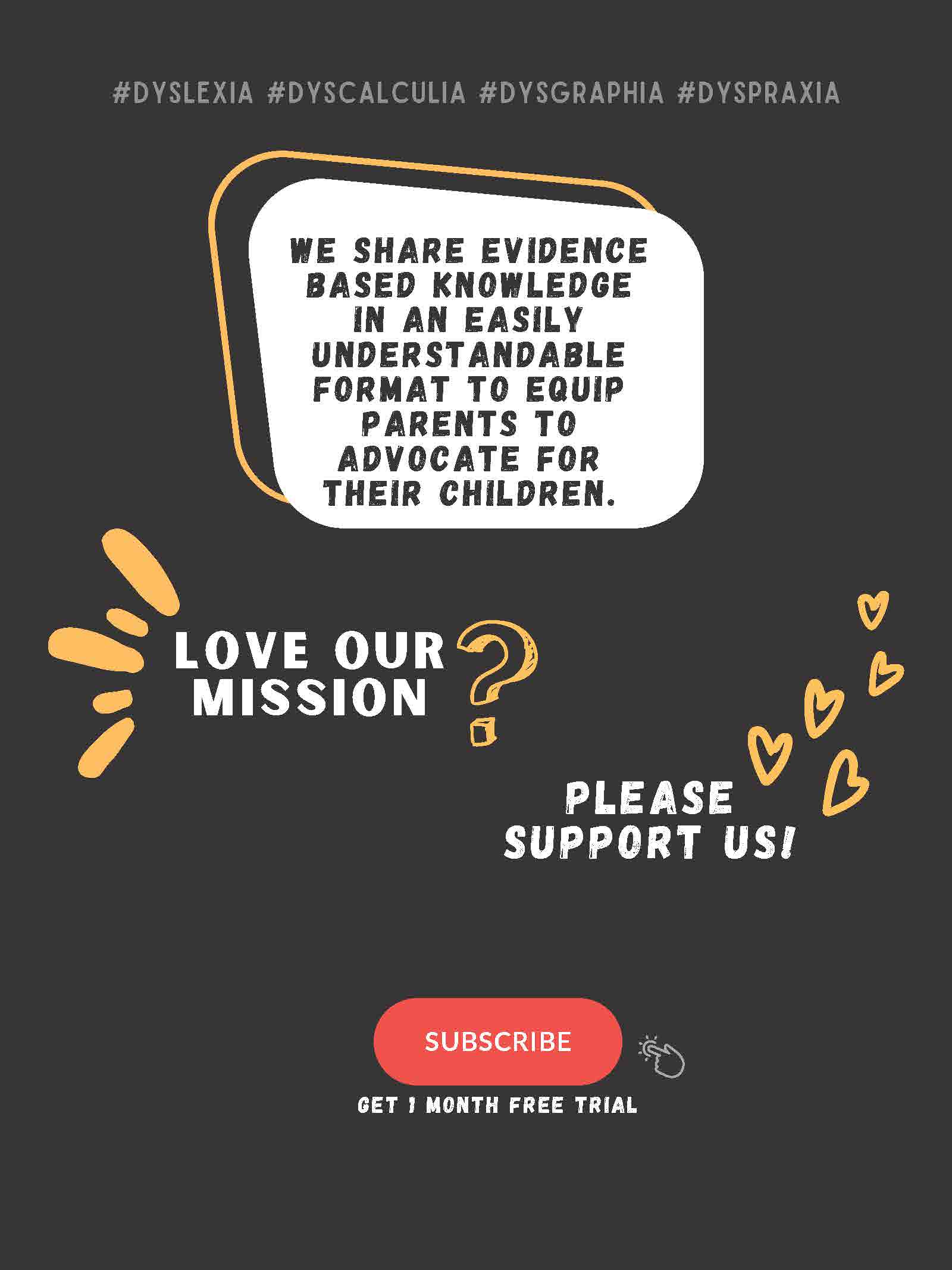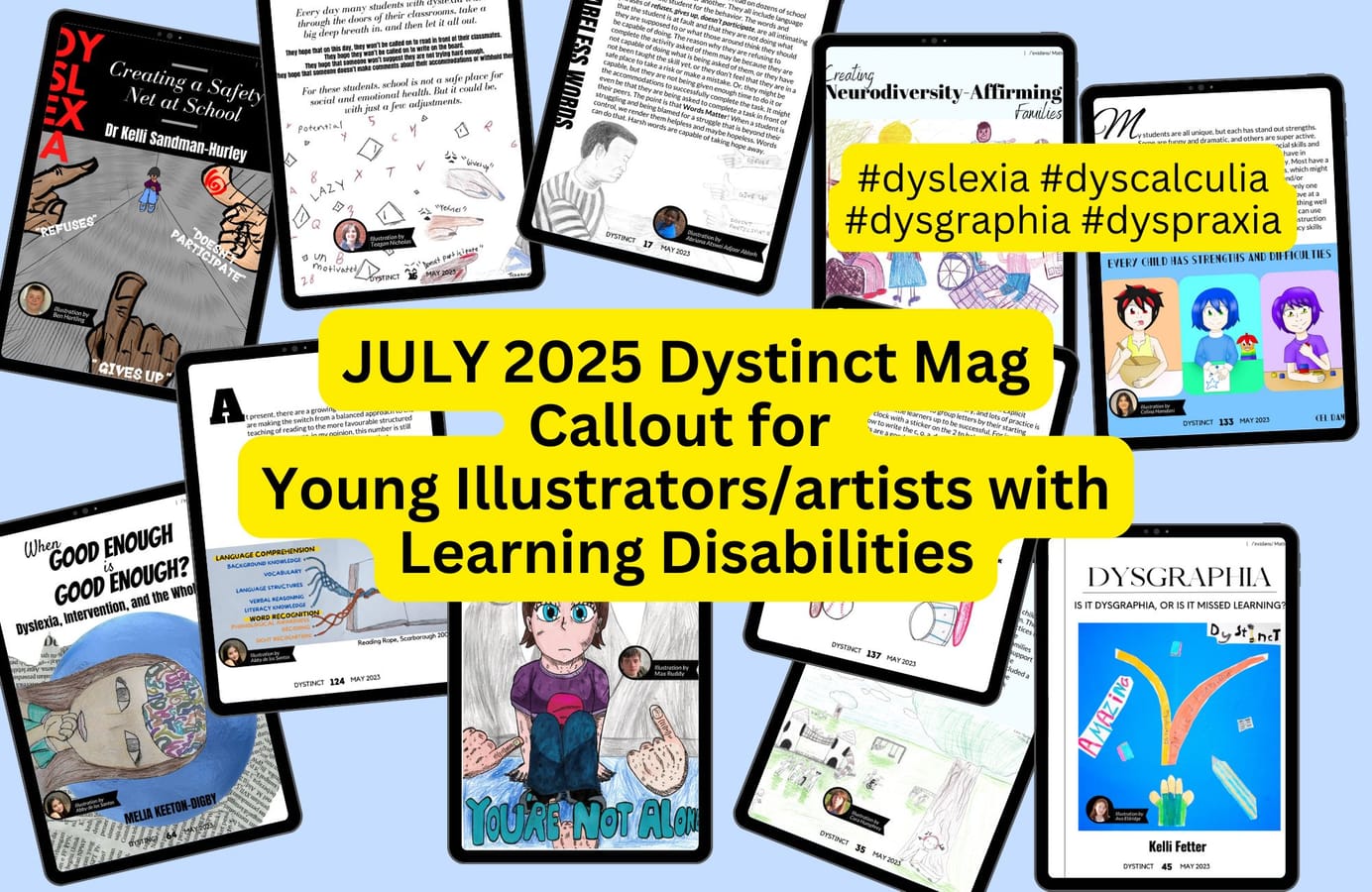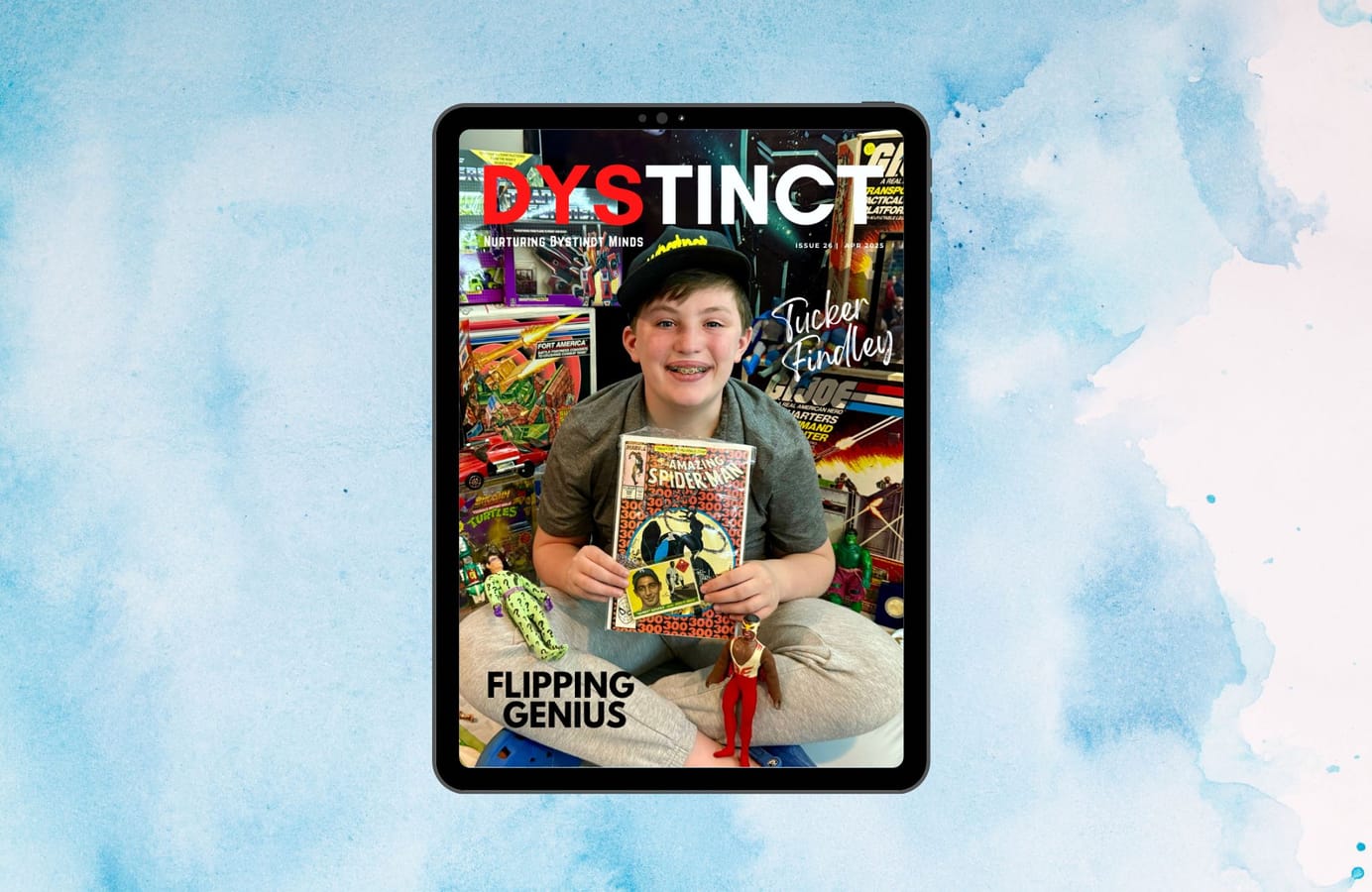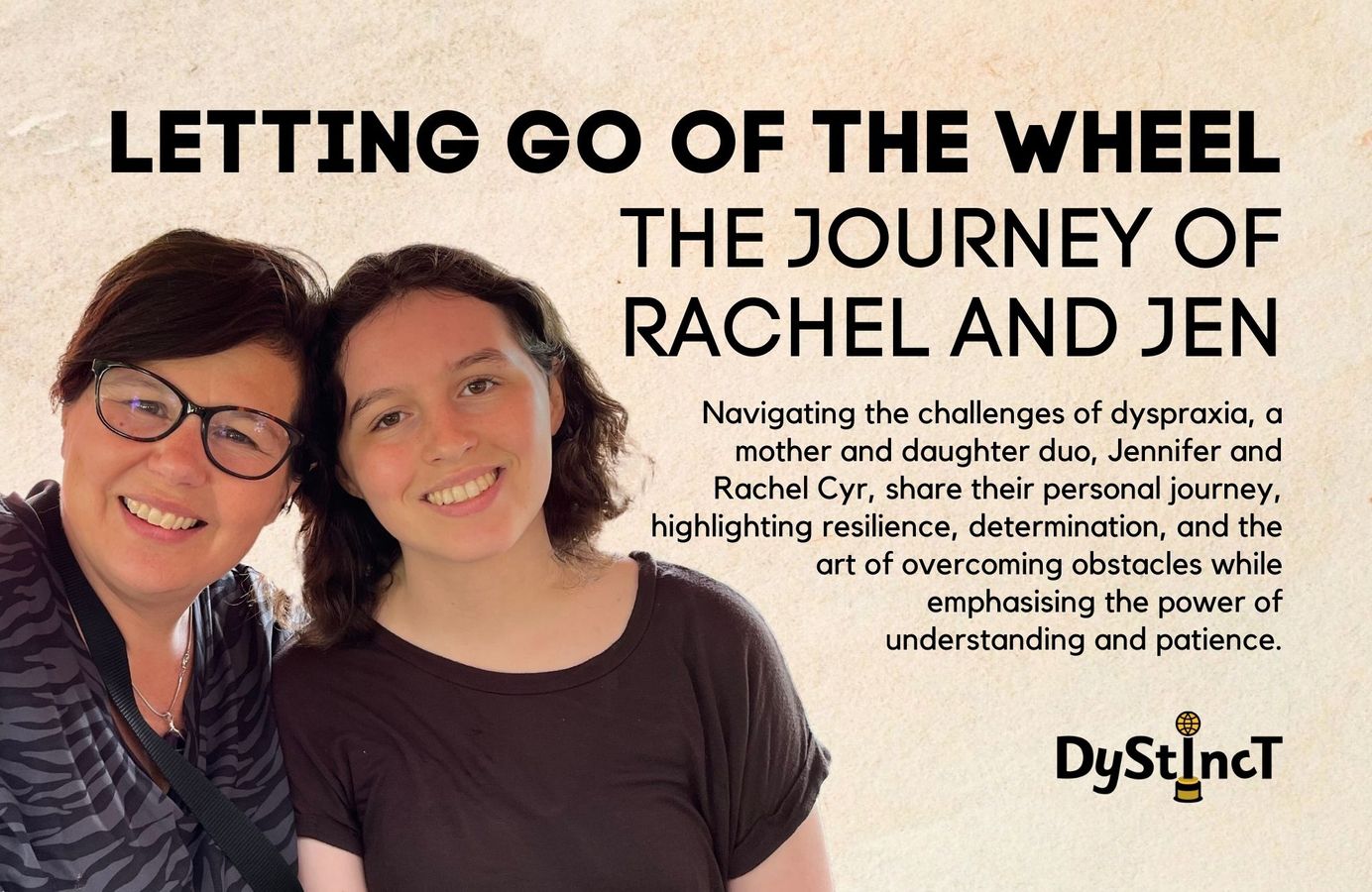
Issue 17: Letting Go of the Wheel: The Journey of Rachel and Jen
Navigating the challenges of dyspraxia, a mother and daughter duo, Jennifer and Rachel Cyr, share their personal journey, highlighting resilience, determination, and the art of overcoming obstacles while emphasising the power of understanding and patience.
Table of Contents
Developmental coordination disorder (DCD) is a condition defined by impairment of motor coordination that interferes with a person’s academic achievement and/or activities of daily living. Problems associated with DCD can include challenges with dressing, tying shoes, riding a bike, handwriting, play skills, and engagement in social activities. - Zwicker et al., 2012
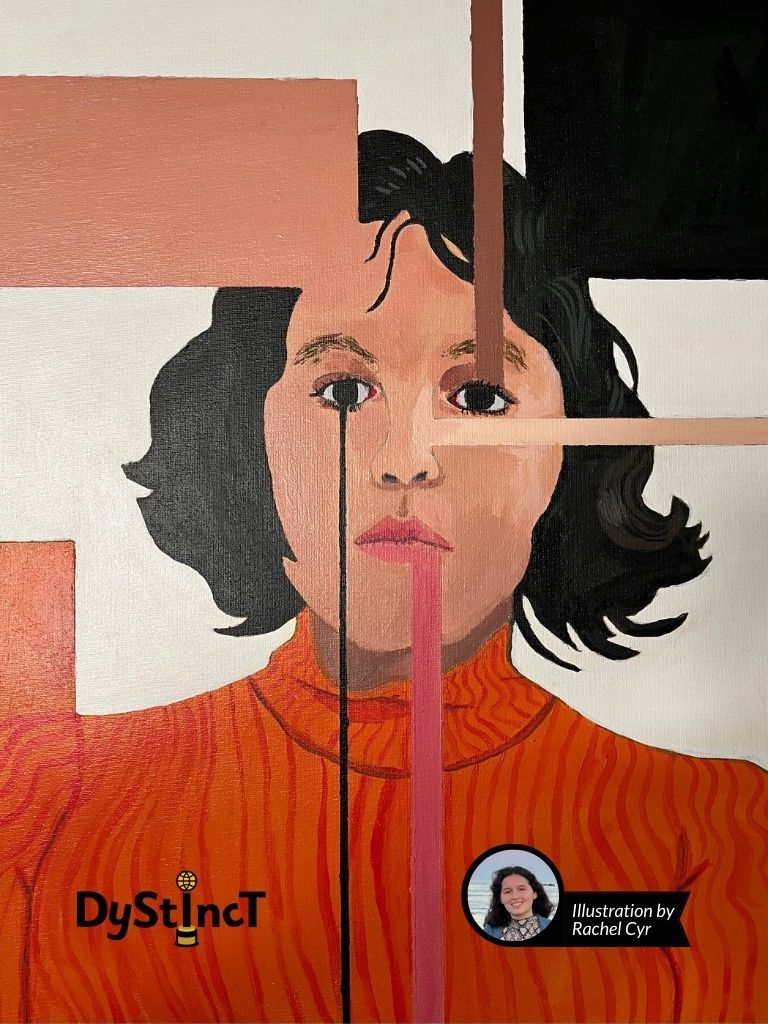
I am riding shotgun as Rachel is driving us to Waterboro, Maine, in the Northeastern U.S.A. We are pushing our way through hour nine of the 70-hour practice requirement leading up to her driver’s license test. Rachel has her eyes on the road and is focused on following the speed limit. She is singing along with Freddy Mercury, a strategy that I know keeps her anxiety in check. She has a great voice and sings with convincing expression, “Having a good time, having a good time. . .”
I am practicing my favorite mindfulness strategies: taking and releasing slow, deep breaths, monitoring our surroundings, and providing coaching tidbits. This part of Route 202 is straight, and the driving is easy. I use my most neutral teacher voice when I urge her to get a little closer to the center line on the road. My husband had taken Rachel driving before but backed away from the task after a frightening left turn made him gasp and swear out loud in a way that was hard for Rach to shake off. Driving with Rachel is now solely my responsibility, and in this moment, I recognize that her mastery of this skill is critical to her (and my) survival.
Rachel is a person with dyspraxia, sometimes called Developmental Coordination Disorder, or DCD. Dyspraxia is a neurological difference that affects things like visual-spatial processing, motor planning, and hand-eye coordination. There are other conditions that frequently go hand in hand with dyspraxia. Rachel’s comorbidities are dyscalculia, ADD, and dysgraphia. None of these things stop her from doing what she wants to do.

Motor tasks, like driving, are a little more difficult for her than they are for most people. Rachel is her own best teacher, and she learns from repetition and practice. Her artistic ability is a testament to that fact. She has a uniquely creative mind and is a true outside-the-box thinker. In order to bring her drawings, paintings, stickers, and pottery to life, Rachel spends the bulk of her free time in her chaotic bedroom studio, listening to music and creating things over and over again until they take the form that she has visualized. I am her mom and am prone to admiring everything about my children, but Rachel’s work ethic leaves me awestruck. I am a true fan and see the pieces born of her efforts as a form of art where effort is the key medium. The paintings are good, but the feelings they evoke in her patrons come from knowing what it took to bring them into being. These feelings make me fiercely protective of her work. When she is passed over for some recognition or small honor at school, I feel defensive to the point of wanting a confrontation because they should see what I see every day. Rachel works harder than most students, and the rewards for her labors are mainly intrinsic. She accepts this, and I should learn to do so, but the feelings that come with being her mom are powerful.
Rachel is her own best teacher, and she learns from repetition and practice.
Rachel was diagnosed with dyspraxia in grade 4 when complex multiplication was introduced, and I subsequently noticed her struggles with basic computation. She had other symptoms, which we had overlooked, thinking they were just insignificant quirks. For example, she usually preferred to play alone, liked to talk and act out stories aloud, and struggled with letter formation and the organization of personal spaces. Her teacher suspected high-functioning autism; I suspected ADD and dyscalculia.
I am a reading specialist and had monitored her reading ability from preschool, so reading was never a concern. I needed better information to figure out what was going on with her learning.
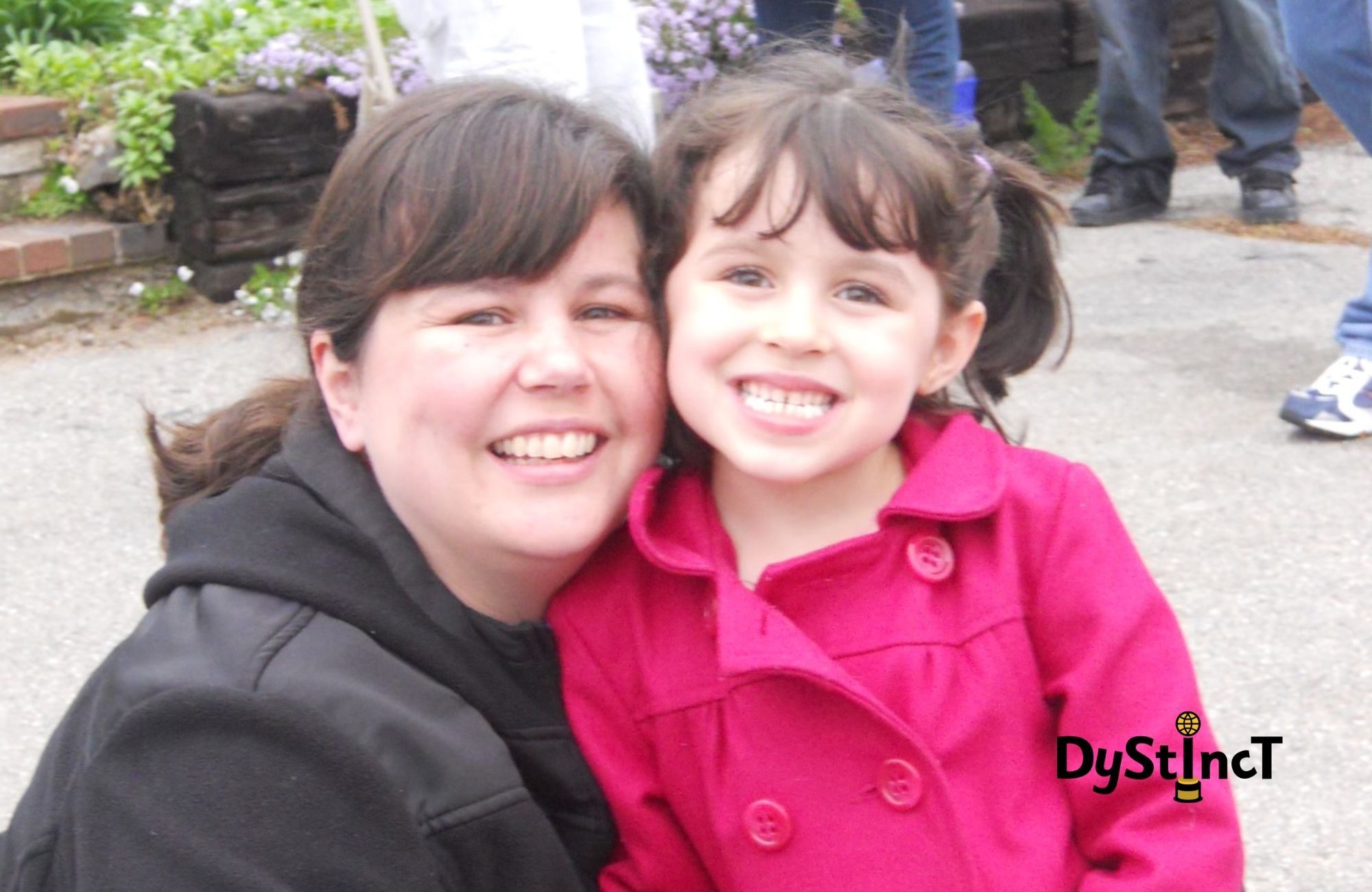
I made an appointment with a local neurologist, who recorded my 9-year-old’s developmental history, gave her a few assessments, and informed me that Rachel had neither autism nor ADD (later discovered) but dyspraxia. I’d been teaching for more than a decade and had never heard of it. A quick internet search turned up a few articles from British, Canadian, and Australian publications. I learned that a few famous people share the condition, including Daniel Radcliffe, of the Harry Potter films, and Albert Einstein. Most people with the diagnosis are males. Comorbidities are common and may interfere with the diagnosis and treatment of dyspraxia. There is no cure for dyspraxia, but treatment, specifically occupational therapy, can improve everyday functioning.
Following the diagnosis, I initiated the special education referral process. The diagnostic testing did not reveal a great discrepancy between her abilities and her performance, but she qualified for a 504, thanks to the neurologist’s diagnosis. I was stunned to learn that this plan did not give her access to occupational therapy, which is the one therapy recommended in all of the articles I had read. The team agreed to speech therapy twice a week to help with social skills and put accommodations into place to give her extra time on tests. I purchased a Chromebook for her to use at school. My husband and I tried to acquire OT through our medical insurance, but the insurance refused to pay because she had turned ten while we were figuring things out. I consulted with a family member who was a practicing occupational therapist and implemented activities to strengthen Rachel’s hand-eye coordination, balance, and handwriting. At the time, it felt like the best I could do.
An additional benefit of her artwork is the ability to manage her anxiety by channeling some of her focus into drawing.
Fortunately, Rachel discovered twin passions in middle school. She began writing impressive, wildly imaginative fantasy stories. Around the same time, she began drawing. She used sketching and doodling as a tool to maintain silence and focus during lectures. She would cut out her best drawings and glue them into a sketchbook. Over the years, she has filled a dozen sketchbooks with characters that project personality and images that have precise and telling details. For every sketch that makes it into the collection, there are several that don’t make the cut. After years of this process, she has developed a skill set that I wouldn’t have predicted after her initial dyspraxia diagnosis. An additional benefit of the artwork is the ability to manage her anxiety by channeling some of her focus into drawing. This tactic hasn’t always been met with enthusiasm from her teachers. I never discouraged it, having realized that sketching during some very challenging, math-heavy courses is more of a survival skill than a distraction.
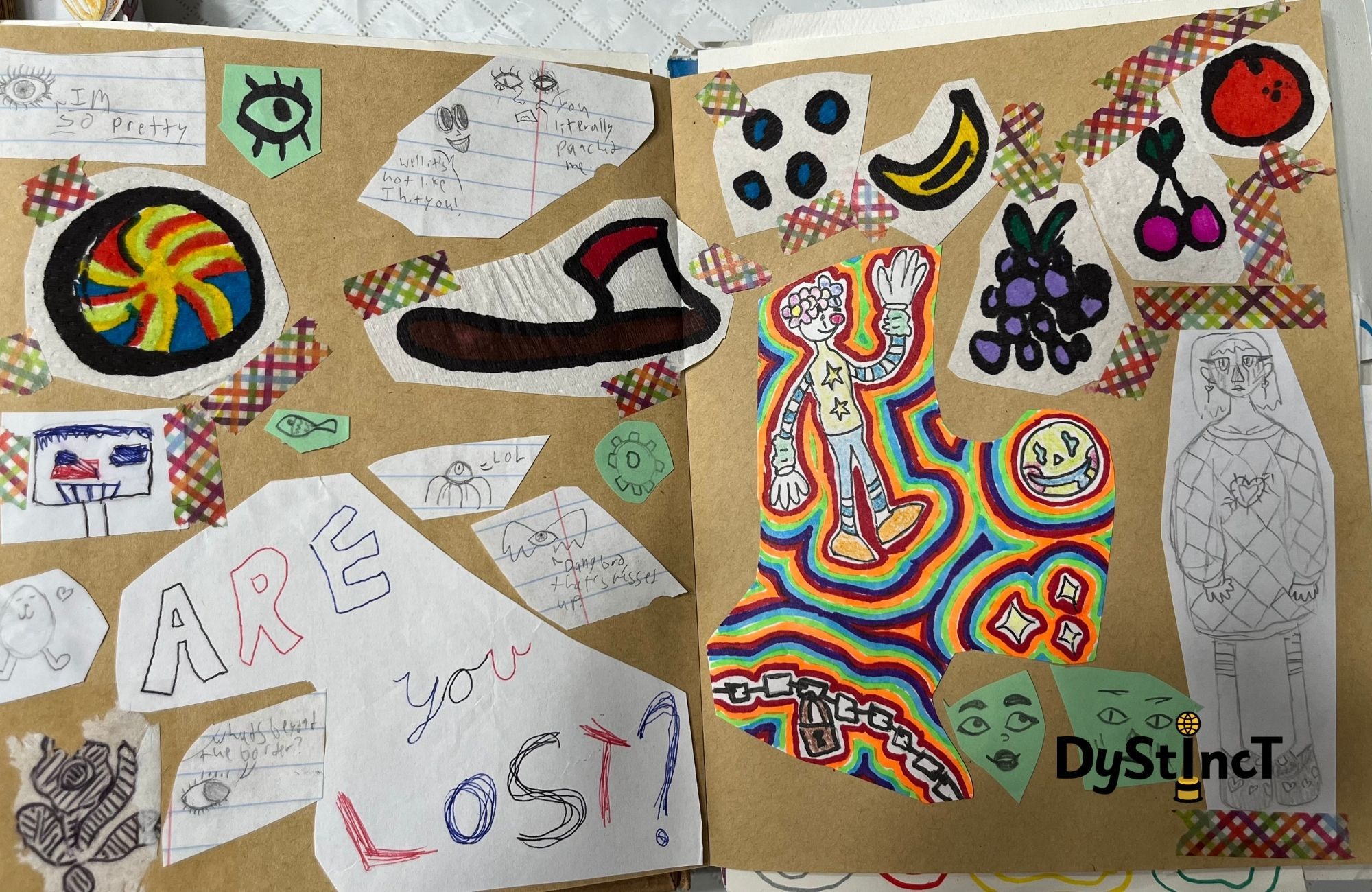
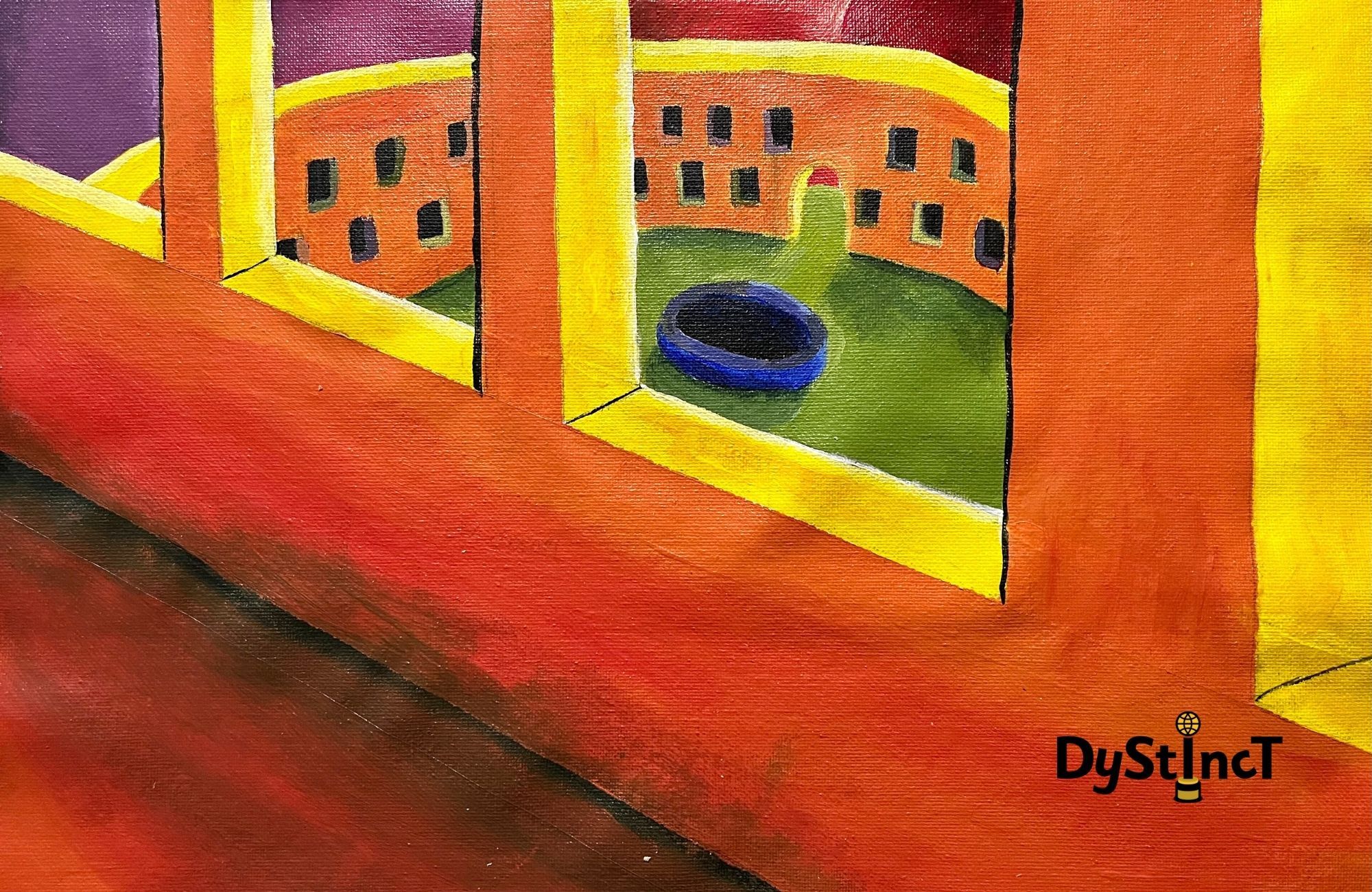
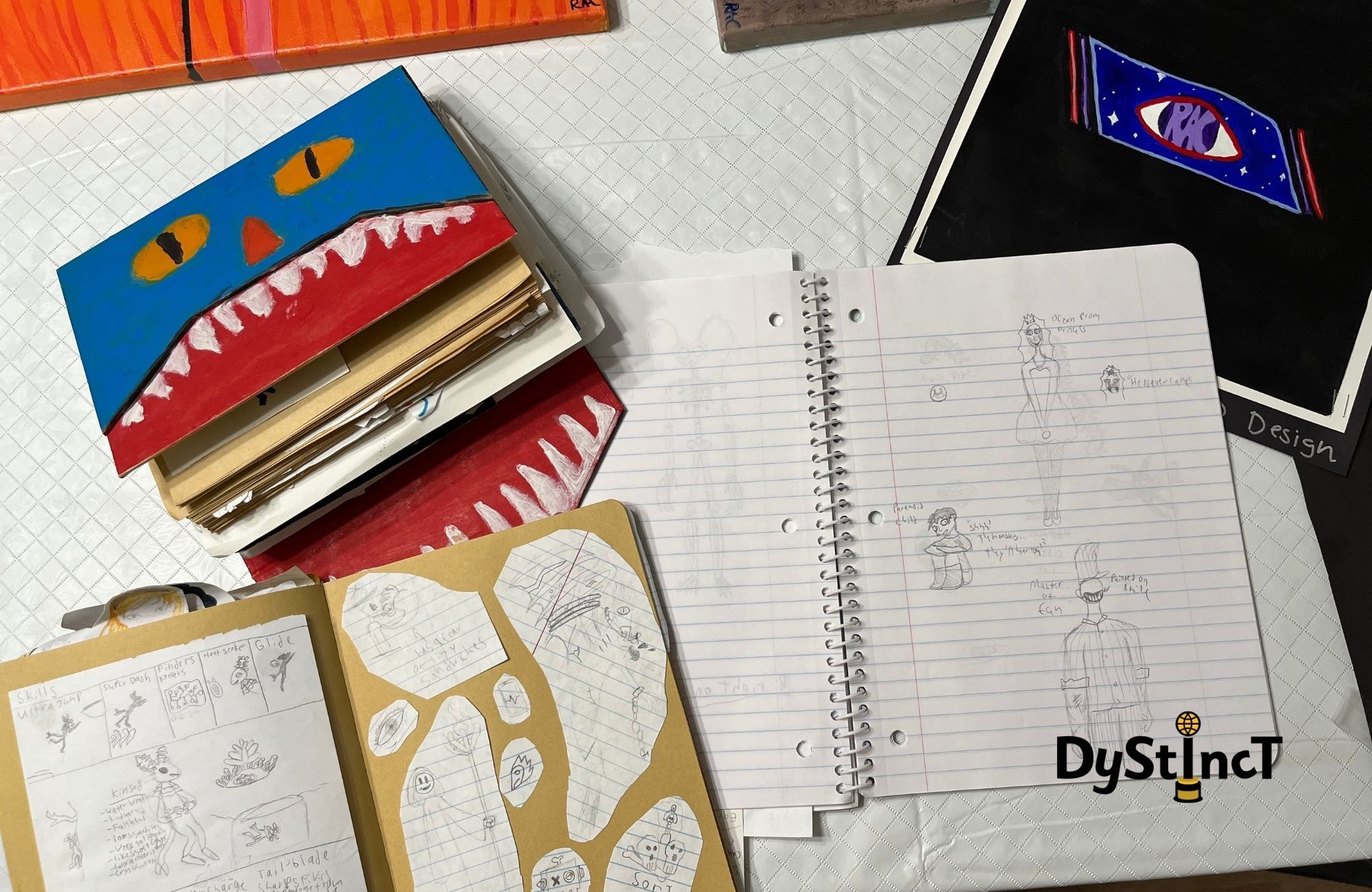
Don’t be discouraged by people who tell you that you shouldn’t doodle in class. ~ Rachel Cyr
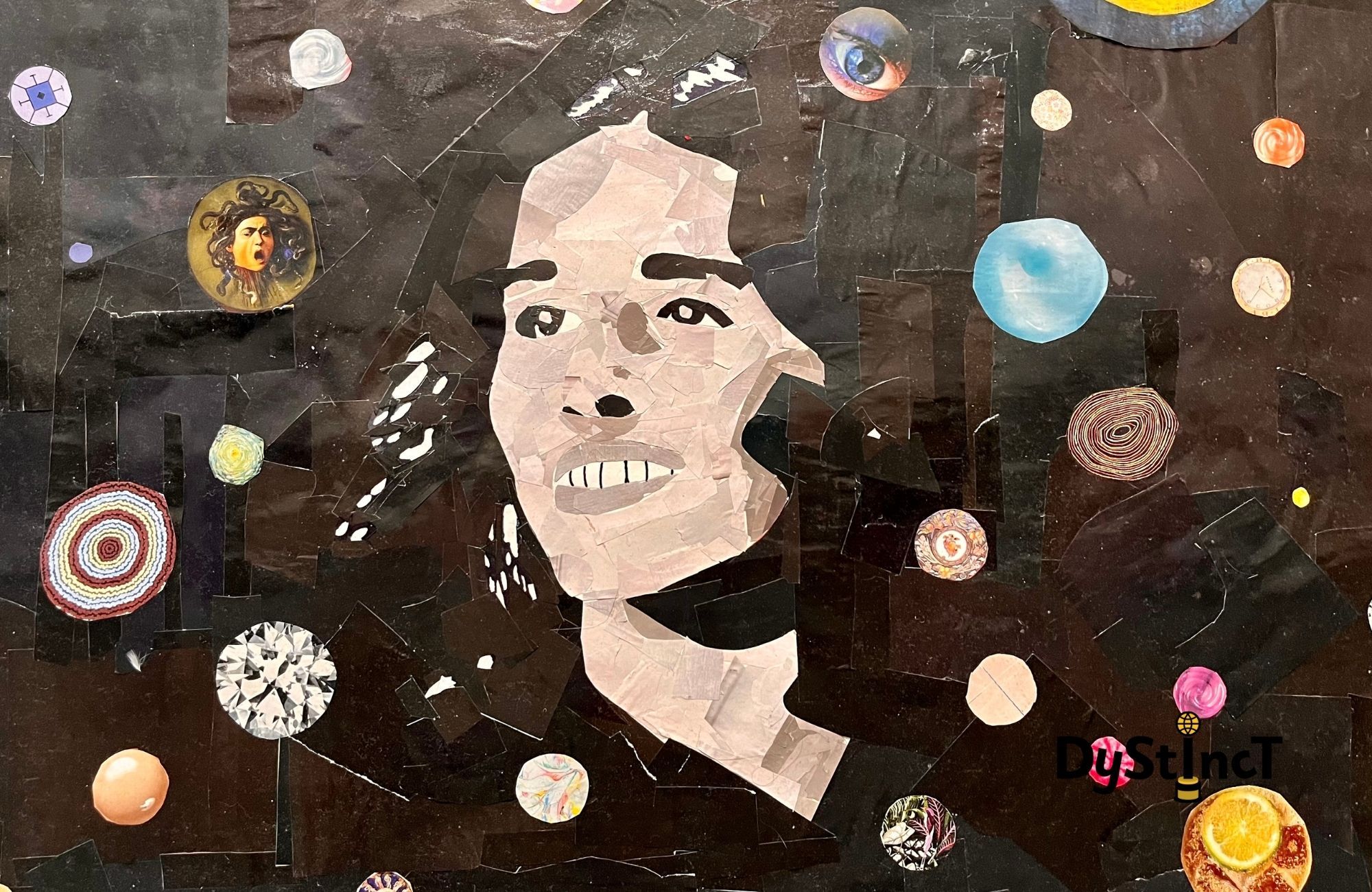
On the far side of Waterboro, I ask Rachel to turn into the Dollar Tree parking lot. There are three parallel parking spaces on the edge of the pavement, and I hop out of the car and have her unroll her window so she can hear me coaching her from a few yards away. The store employees, having a smoke break, are watching us with curiosity, and when Rachel is successful on her third attempt, they applaud and yell, “She did it!” It is one of those rare moments when I know that she has been seen in the way that I see her - as a person who can do complex, multi-step things given enough time, patience and practice. On the ride home, I am quiet, allowing her to be her own coach. I realize that I’m not alone on this journey with her. Rachel is steering this vehicle, and she is a gifted and tenacious teacher.
References
- Zwicker, J. G., Harris, S., & Klassen, A. F. (2012). Quality of life domains affected in children with developmental coordination disorder: a systematic review. Child Care Health and Development, 39(4), 562–580. [doi.org]
Rachel Cyr
Opinions
Rachel Cyr
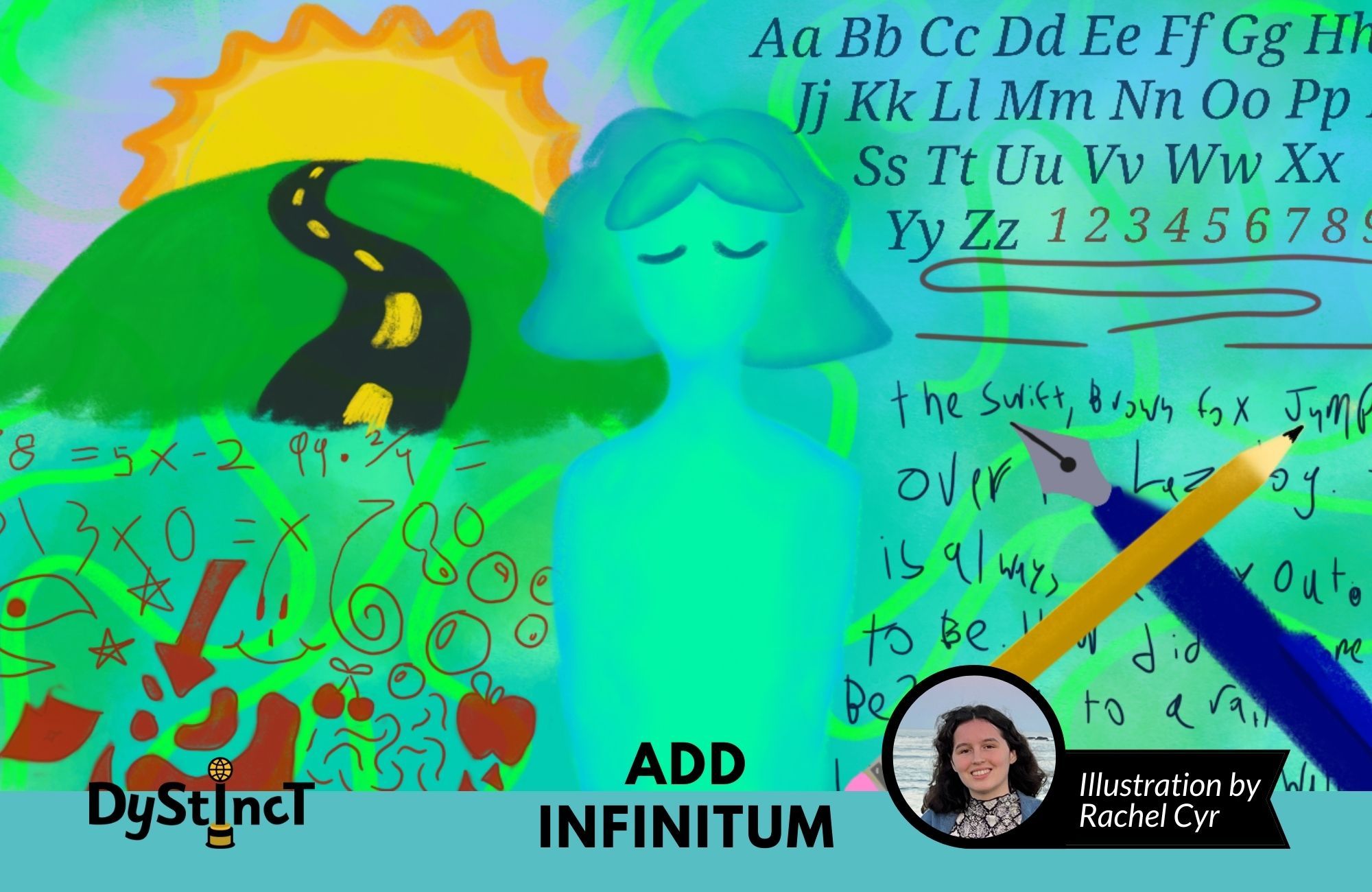
ON HER FAVOURITE THINGS
I have a passion for the arts as well as animation. I love literature and am taking Advanced Placement English Literature this year. I’ve always admired good filmmaking and storytelling, more so now because I know what goes into it. I love making my ideas come to life. I’m also very fond of animals (especially dogs), collecting things like minerals and glass, exploring nature, and spending time with my family.
ON HER LEARNING DIFFERENCES
I could never click with things like multiplication tables or long division. I find computation difficult to this day. It’s very stressful when the teacher is moving forward with a concept, and I’m still stuck on step one. It brings me back to 5th grade when I experience things like that. Math tutoring was very helpful while I was taking Algebra 2 and Chemistry last year.
ON HER FUTURE
I hope to be in college studying the arts and earning money through my own Etsy shop.
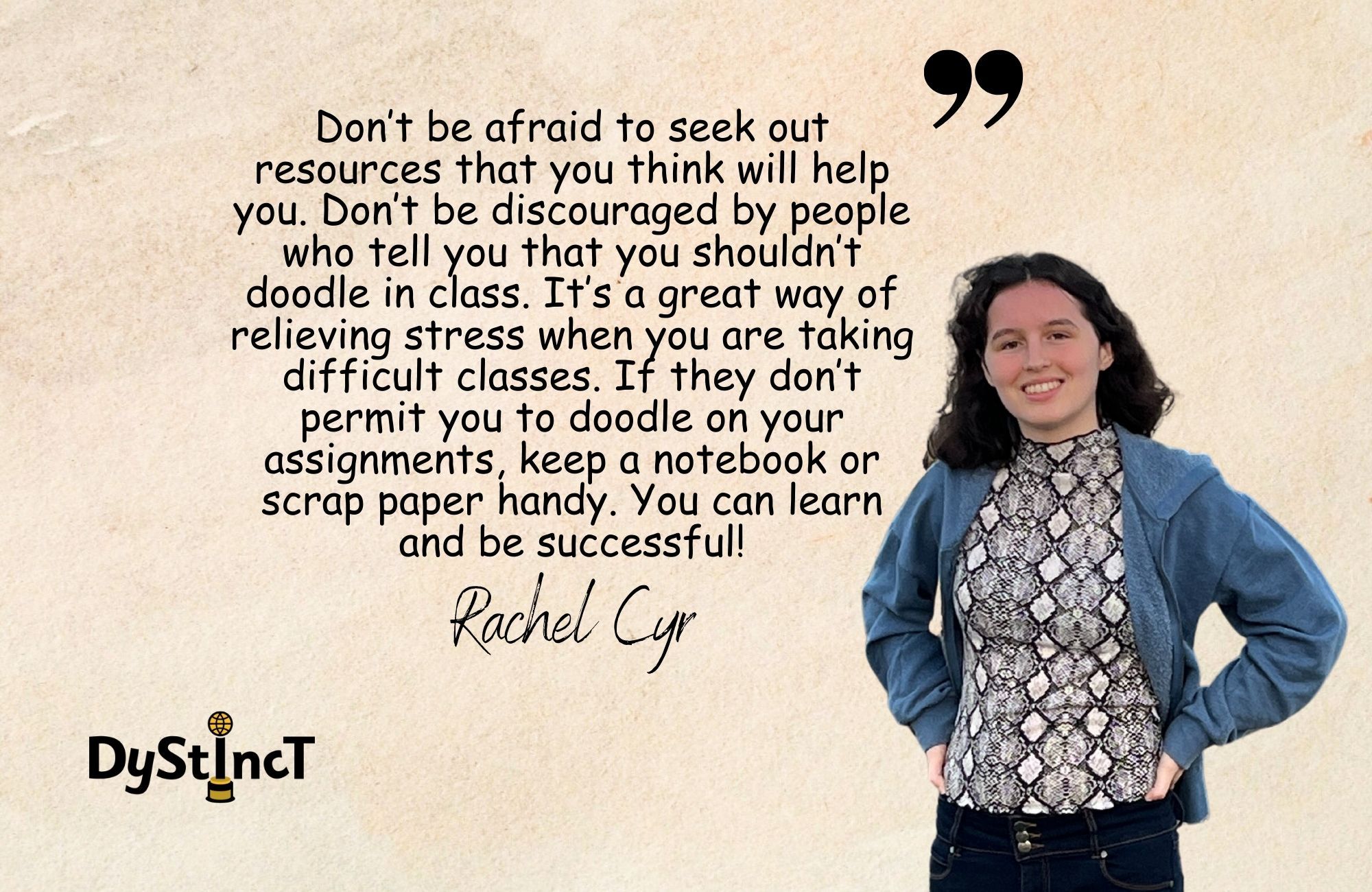
Extracts from Dystinct Magazine
Extracts from Dystinct Magazine











